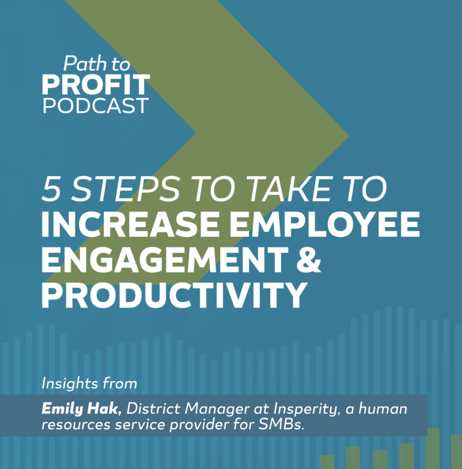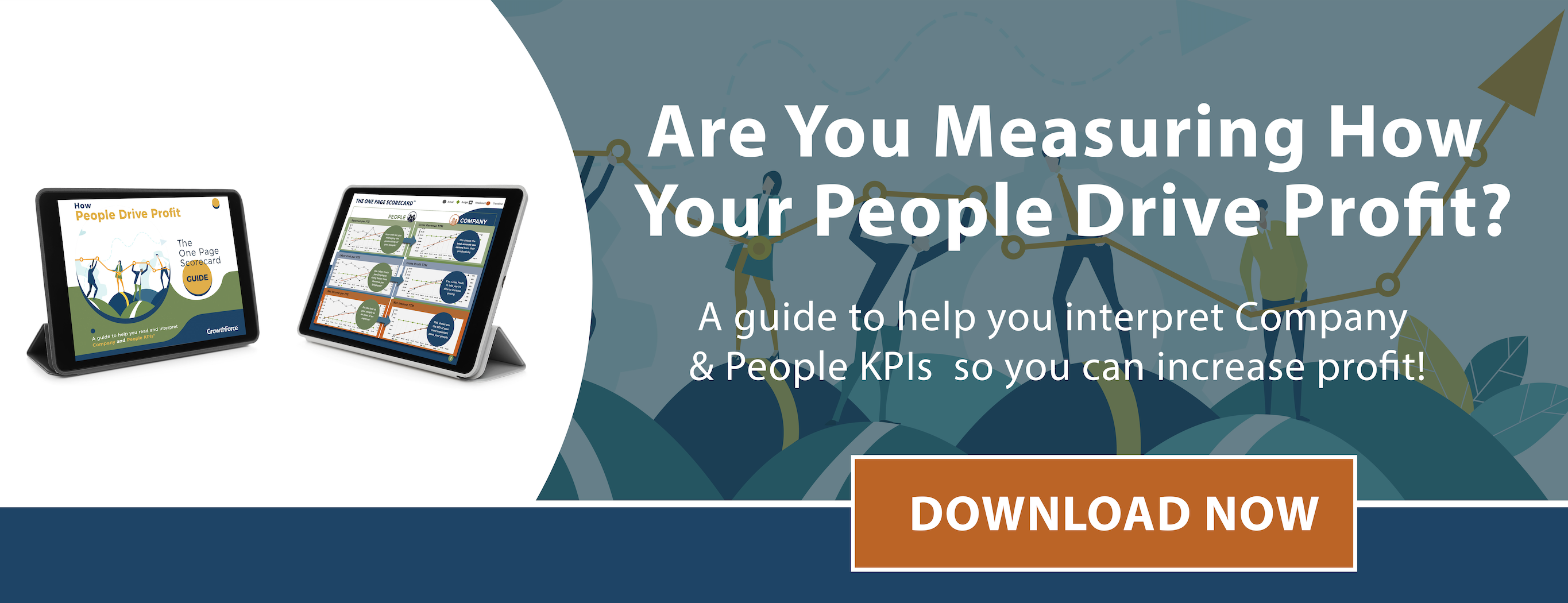9 min read

The Great Resignation spurred on by the pandemic has exposed egregious problems. From company culture, work-life balance, and employee engagement issues around the world, employees are leaving their dissatisfying jobs or shifting paths in their careers, leading to unprecedented employee turnover rates.
|
Key Takeaways
|
While this turn of events took many by surprise, it maybe shouldn't have. Research has made it clear that engaged employees are more successful, that they stay in their jobs, and that they are more productive.
Not only are engaged employees more successful, but they're also much more resilient.
A Gallop study that looked at nearly 63,000 businesses during the economic recessions of both 2000-2001 and 2008-2009 found that the companies who had highly engaged teams were also much more resilient and fared much better during times of economic hardship [1].
So, as CEO, what can you do in your company to foster a better workplace culture and improve employee engagement?
A whole lot, it seems!
6 Steps to Increase Employee Engagement and Reduce Turnover From the C-Suite
1. Understand Your Effect on Employee Engagement and Employee Satisfaction
Although you might not interact with all of your employees on a daily basis and you might feel like you're rather disconnected from them, you absolutely must remember that, as CEO, you are leading your entire organization from those surrounding you in the c-suit to your middle managers, to the entry-level employee who was just hired last week. Your attitude and the workplace culture that you cultivate from inside your office will have an absolute effect on the rest of your organization.
Research from Gallup has shown that employee engagement comes from the top and the CEO's leadership is particularly crucial to engagement [2]. Gallup's research has also demonstrated the effect of positive leadership trickling down throughout an organization.
According to their research, managers working for engaged leaders are 39% more likely to be engaged, and employees working for engaged managers are 59% more likely to be engaged [3].
As a CEO, it's essential to foster positivity, trust, and channels of open communication in your workplace to cultivate a positive workplace culture that drives employee engagement and employee satisfaction.
2. Understand How Highly Dependent Employee ROI Is on Employee Engagement
Focused on the "business" of business, many CEOs often regard the portions of their roles that are focused more on leadership and culture than management and strategy as fluff or a waste of time, something to think about when there's nothing else to think about (and we all know how little downtime CEOs actually have). However, this logic is quite thoroughly flawed.
The entire success of your company and the people in it depends upon your leadership as CEO. It depends upon the culture you create inside your organization and how engaged that culture makes your employees
Read More: How Recognition and Rewards Impact Employee Engagement and Performance
Why does your success depend so heavily upon these seemingly extraneous details? Success depends upon employee engagement because employee engagement is directly related to employee productivity.
Another Gallup study from 2020 examined outcomes in 230 businesses with 1.8 million employees to compare the top quarter to the bottom quarter of businesses in terms of employee engagement [4]. The study found that compared to the bottom quarter...
...companies with highly engaged employees experienced much more success: with 23% more profitability, 18% more sales, and 10% more customer loyalty.
Plus, these companies benefited from 81% fewer sick days, 66% increase in employee wellbeing, and 64% fewer safety problems. The study also found that companies with more than 40% annual turnover saw 18% lower turnover rates, and companies with less than 40% annual turnover experienced reduced turnover rates by 43%.
From the top, you have a direct effect on employee engagement by creating a culture that fosters engagement, setting an example with your own attitude, actions, and words, and by creating programs for hiring, onboarding, training, and professional development that are clearly designed to encourage and reward engagement.
3. Choose the Right Business Leaders to Facilitate Positive Company Culture
Like people, all businesses have personalities. A company can feel pretentious or laid back, fun or boring, outdated or on the cutting edge. A business can feel like drudgery to clock into or it can make you want to skip to your desk. All of these feelings that a company can inspire come directly from the company's culture.
Your company's culture starts with you, the CEO. However, you can't be fully responsible for fostering a positive company culture that drives employee satisfaction, engagement, and productivity; all of your leadership needs to be of the right mold to ensure the positive, psychologically safe workplace that you're striving to create, trickles down from the top through your department heads, to the employees below.
Read More: The Cost of Bad Leadership: How to Choose the Right Leaders for Your Business
As you can see, middle managers ideally need two very distinct skill sets that come together to make them great leaders and great business people.
When you choose the right people for middle management and give them the tools to learn how to transform themselves into true leaders, who can lift up the people working below them, your positive culture will flow freely from the C-suite through middle management to the people who truly make your company thrive.
4. Operate With Open Channels of Communication
One essential component of a positive workplace culture is open communication. While everyone welcomes good news, as CEO, you set the tone for how the people in your company deal with bad news and criticism.
If you want to benefit, grow, and improve as a result of every single mind working in your business, then you need to encourage a growth mindset and create a corporate culture that cultivates psychological safety around failure, mistakes, new ideas, and criticism in order to grow.
You will never be able to improve your operations if you don't have honest communication making its way to you from the bottom, and this absolutely won't happen if there's any roadblock positioned between you and your least senior employee. That means you not only need to welcome "bad news" graciously, without getting upset, but you also need to train your middle managers to do the same.
Read More: The Most Profitable Service Businesses Do This Really Well!
If any employee is ever nervous about complaining to their superior or someone in your human resources department about any aspect of their job or their supervisor is nervous about taking the complaint to their supervisor, then the information will get lost and you won't be able to make real changes from the top to address systemic issues in your company that hinders employee satisfaction and engagement.
5. Don't Disregard Your Human Resources Department
In the spirit of maintaining open, free communication within your company, you, as CEO, need to develop a strong relationship with your HR department. HR is your direct line to the people in your organization, and HR might often be your only source for information and insights into what your employees are experiencing, how satisfied they are with their jobs, and what they actually want from their professional careers.
By staying in touch and working closely with HR, you can easily take the temperature of the people in your company and make strategic management adjustments to improve the culture and your employees' lives.
Additionally, you should work with HR, including the department in the development of your hiring and onboarding procedures. They are directly responsible for carrying out these processes and can provide you with great insights into hiring strategies that will help you find the right people to work in the right positions in your company.
6. Your People Are Your Greatest Asset – Now, Believe It!
In a business, your people are your greatest asset. You begin investing in them from the moment they're hired and continue investing every day they come to work for you. Like any other endeavor that you dedicate resources to, it's essential to protect and nurture the investment you make in your people.
You should start by valuing them properly because employees can tell when they aren't considered valuable to the companies they work for, and if employees do not feel appreciated, their engagement and satisfaction will suffer significantly.

How can you motivate disengaged employees? How do you translate a company goal into individual goals?
🎙 Listen to the Full Path To Profit Podcast Episode to find out!
When you establish clear frameworks for success in your business, where there are goals to achieve and ladders to climb, your employees will strive toward those benchmarks.
When you tie this framework and these goals into your overall operating framework and greater business strategy, your employees not only have the opportunity to excel but so does your business.
With a strategic system of recognition and rewards in place, your employees will be highly engaged (i.e. highly productive) in the specific tasks that drive your business growth.
In this type of framework, where HR and leadership work hand-in-hand, you no longer have to think of employee bonuses, rewards, or other culture-building events as costs that are working against your greater goals.
They're simply investments that are going to drive a much greater ROI on the cost of your labor while also significantly reducing employee turnover.
The ROI of Choosing the Right Words as a CEO
If you have one takeaway from this entire article- it’s to consistently keep in mind your actions and words have the power to affect your entire company.
Operate in your day-to-day work-life the way you want your entire organization to operate, and you'll set a strong example, earn employee trust, and create a positive environment where your employees will thrive, feel satisfied, and be highly engaged in their jobs.
With your employees motivated to excel each day, you'll see a noticeable increase in productivity and a bump in the bottom line.
[1] https://cuttingedgepr.com/ceo-crucial-to-employee-engagement/
[3] https://www.gallup.com/services/182138/state-american-manager.aspx
[4] https://www.gallup.com/workplace/321032/employee-engagement-meta-analysis-brief.aspx




